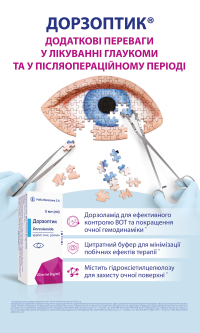Процес рецензування
- Усі рукописи (статті), подані до редакції науково-практичного журналу «Офтальмологічний журнал» обов'язково проходять процедуру рецензування (одностороннє сліпе рецензування).
- Стаття приймається до розгляду лише за умови, що вона відповідає вимогам до наукових статей, які подаються для публікації в журналі.
- Усі матеріали надсилаються до редакції у двох примірниках та мають відповідати вимогам до оформлення рукописів для публікації в «Офтальмологічному журналі» (див. «Офтальмологічний журнал» №6 2012).
- Стаття реєструється відповідальним секретарем у журналі реєстрації статей із зазначенням дати надходження, назви, П.І.Б. автора/ів, місця роботи автора/ів. Статті надається індивідуальний реєстраційний номер.
- Відповідальний секретар проводить попередню оцінку статей, що надійшли до редакції, відповідності змісту матеріалу профілю та тематиці журналу, направляє їх для рецензування двом або більше незалежним рецензентам, обраним редакторами.
- Рецензент повинен розглянути направлену статтю у строк, погоджений з відповідальним секретарем, з моменту отримання та направити до редакції (за електронною поштою) мотивовану відмову від рецензування або рецензію. Оскільки ми використовуємо сліпе одностороннє рецензування, рецензенти можуть бачити ім'я автора. Отже, рецензенти мають повідомити про конфлікт інтересів, який може вплинути на його думку.
- Рецензенти подають письмову рецензію, наприкінці якої на основі аналізу готовності матеріалу дається висновок про можливість публікації статті.
Рецензент може:
- Рекомендувати статтю до друку;
- Рекомендувати статтю до друку після доопрацювання з урахуванням зауважень (незначні зміни);
- Рекомендувати статтю до друку після доопрацювання з урахуванням зауважень (суттєві зміни);
- Не рекомендувати статтю до друку.
Якщо рецензент рекомендує статтю до опублікування після доопрацювання з урахуванням зауважень або не рекомендує статтю до опублікування – у рецензії мають бути зазначені причини такого рішення.
- Після отримання рецензій на черговому засіданні редакційної ради розглядається питання про статті, що надійшли, і приймається остаточне рішення на основі оцінки рецензії про опублікування або відмову в опублікуванні статей. На основі прийнятого рішення автору/ам надсилається лист (по e-mail, поштою) від імені відповідального секретаря редакції. У листі дається загальна оцінка статті, якщо стаття може бути опублікована після доопрацювання/з урахуванням зауважень – даються рекомендації щодо доопрацювання/зняття зауважень, якщо стаття не приймається до опублікування – зазначаються причини такого рішення. Проте ім'я рецензента залишається анонімним авторам.
- У разі незгоди з думкою рецензента автор статті має право надати аргументовану відповідь до редакції журналу. Стаття може бути спрямована на повторне рецензування або узгодження в редакційну колегію.
- При достатніх підставах статті можуть направлятися на додаткове або анонімне рецензування.
- Залучення зовнішніх рецензентів можливе у таких випадках: коли відсутній член редради, який курирує певний напрямок (наукову дисципліну); член редакційної ради не має змоги підготувати рецензію; редакційна рада не погоджується з думкою, висловленою у рецензії члена редради; надходить стаття від члена редакційної ради. На черговому засіданні редакційної ради ухвалюється рішення про звернення з проханням про рецензування до вченого, який має наукові роботи з проблематики, заявленої у статті. Від імені редакційної ради такому вченому надсилається лист із проханням про рецензування. До листа додаються стаття та рекомендована форма рецензії.
- Статті, надіслані авторам для виправлення, мають бути повернені до редакції не пізніше ніж через місяць після отримання. Якщо статтю повернено в пізніший термін, відповідно змінюється і дата її надходження до редакції. У реєстраційному журналі робиться відмітка про дату надходження нової редакції статті.
- Відповідальний секретар аналізує статті з рецензіями та виправлення, внесені автором згідно з зауваженнями рецензента та редакції, подає їх на розгляд редколегії для прийняття остаточного рішення.
- На засіданні редакційна колегія ухвалює остаточне рішення про відхилення, переробку або прийняття рукопису статті.
- Редакційна колегія зобов'язана повідомити автора про своє рішення протягом не більше трьох місяців з дня отримання рукопису, додавши при цьому копію рецензії, якщо вона є негативною або містить критичні зауваження.









